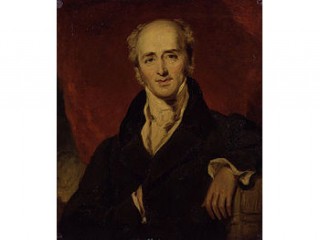
Charles 2nd Earl Grey biography
Date of birth : 1764-03-13
Date of death : 1845-07-17
Birthplace : Fallodon, Northumberland
Nationality : British
Category : Historian personalities
Last modified : 2011-02-03
Credited as : Statesman, Prime Minister of UK, married Mary Elizabeth Ponsonby
The English statesman Charles Grey, 2d Earl Grey, served as prime minister from 1830 to 1834. He is best known for securing the passage of the Reform Bill of 1832.
Charles Grey was born at Fallodon, Northumberland, on March 13, 1764, the son of Col. Charles Grey (later, 1st Earl Grey) and heir to his father's elder brother, Sir Henry Grey of Howick. The Greys were an ancient Northumberland family, and the young Charles received an aristocratic education at Eton and Trinity College, Cambridge. In 1786, at the age of 22, he became a member of Parliament for the county, joining the followers of Charles James Fox.
Tall, slim, and aristocratic, with great debating talent, Grey early won a leading place among the exclusive Foxite Whigs. The most prominent among those who founded the Society of the Friends of the People in 1792, Grey deserves most of the credit for attaching his party to the cause of parliamentary reform. In 1793 and 1797 he moved reform motions in the Commons.
The Whig support of reform and opposition to British participation in the wars of the French Revolution condemned them to long years in opposition. It was not until 1806 that they finally achieved office in the coalition ministry of "All the Talents." Grey served as first lord of the Admiralty and, on Fox's death in September 1806, succeeded him as foreign secretary and leader of the party. He played a leading part in the abolition of the slave trade and was a firm supporter of extended civil rights for Catholics, which caused the downfall of the government early in 1807.
Grey's support for Catholic emancipation kept him out of office until 1830. He had, however, never abandoned his belief in the necessity for parliamentary reform, and when the Duke of Wellington opposed it and the Tory ministry collapsed, Grey got his opportunity. He became the head of a coalition of Whigs, Canningites, and one or two High Tories, who eventually carried the Reform Bill of 1832. Grey's role was crucial. He insisted on a bill broad enough to satisfy public opinion and resisted all efforts to water it down. He also handled King William IV with a happy combination of tact and firmness. The result was a measure which largely eliminated the rotten boroughs and enfranchised a large section of the middle classes. Grey believed that by carrying timely reform he had saved the country from revolution, and he may well have been right. Though he remained in office until 1834, Grey did not play a major role in the great reform measures which followed parliamentary reform.
Upon leaving office Grey retired to his beloved Northumberland and spent his last years in the country pursuits he loved and in the bosom of his large and happy family. He died in 1845, at the age of 81.
















